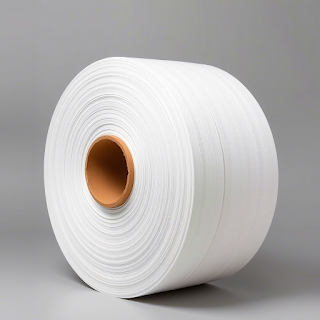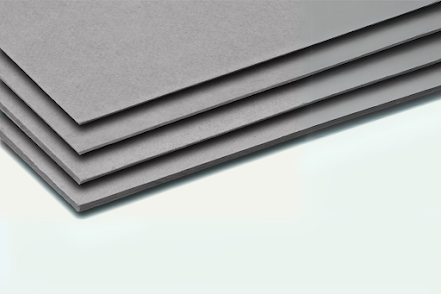Understanding the Manufacturing Process of PE Coating Paper
Introduction
Industries are looking for sustainable, long-lasting, and
protective packaging materials in today's cutthroat and eco-aware world. PE Coating Paper
is one such product that has become essential in many industries. It is used in
everything from industrial labeling to food packaging and is essential for
improving the safety and shelf life of products. However, what precisely goes
into creating this adaptable substance? This article delves deeply into the
intricate process of making coating paper, outlining each stage and emphasizing
its importance.
What is PE
Coating Paper?
Defining
the Material
The term "coating paper," which stands for
"polyethylene coated paper," refers to paper that has been lightly
coated or laminated with polyethylene (PE). The base paper gains enhanced
durability, heat sealability, and moisture resistance from this coating. It is
frequently used in packaging because of these qualities, particularly in
situations where barrier protection is essential.
Why It
Matters
In many industries, coating paper is a silent but vital hero
that keeps food clean and prevents leaks in disposable cups. It is both
environmentally friendly and adaptable because it is recyclable and can be
customized to meet particular requirements.
Raw
Materials Used in the Manufacturing
Base
Paper
High-strength, premium base paper serves as the basis for
coating paper. The final performance of the coated product is determined by the
quality of the base paper. Because of its strength and porosity, kraft paper or
poster paper is typically used.
Polyethylene
(PE)
This thermoplastic polymer is the key to the coating
process. It is chosen for its excellent moisture barrier properties, chemical
resistance, and ability to be heat-sealed.
The
Manufacturing Process Explained
Step 1:
Paper Selection and Preparation
Choosing the right base paper grade is the first step in the
process. To guarantee consistent feeding, rolls of this paper are unwound and
run through tension control units. Any surface flaws in the paper, such as
holes or irregular textures, are found and fixed.
Step 2:
Surface Treatment
The base paper is surface treated to guarantee that the PE
layer adheres correctly. In order to increase surface energy and facilitate an
efficient bond between the molten PE and the paper fibers, corona treatment is
frequently employed.
Step 3:
Extrusion Coating
This is where the process starts. After being melted at
about 300°C, polyethylene is extruded through a flat die. It is instantly
thrown onto the moving web of base paper as it emerges. A continuous, thin
layer is formed when the molten PE adheres to the surface.
Step 4:
Cooling and Solidifying
After that, the coated paper is passed over a chill roll,
which rapidly cools and solidifies the PE layer. This quick cooling guarantees
a level and smooth surface, which is essential for tasks like labeling and
printing.
Step 5:
Trimming and Slitting
After coating and cooling, the PE Coating Paper is trimmed
to remove rough or uneven edges. It is then slit into smaller rolls or sheets
depending on customer requirements.
Step 6:
Quality Control
Every batch is put through a rigorous quality check. To make
sure the product satisfies industry standards, parameters like coating
thickness, adhesion strength, surface smoothness, and moisture resistance are
tested.
VISIT
ALSO: https://rbrpaper.weebly.com/home/why-grey-board-is-the-best-choice-for-sustainable-packaging
Applications
of PE Coating Paper
Food Packaging
This material is ideal for wrapping frozen foods, dairy
products, and confectioneries. Its moisture and grease resistance ensure
hygiene and freshness.
Disposable Tableware
Cups, plates, and bowls made from PE Coating Paper offer
leak-proof properties, making them perfect for serving hot or cold beverages
and foods.
Industrial Packaging
Used in electronics and machinery packaging to protect
against moisture and static. It also serves as an effective liner in carton
boxes.
Medical and Pharmaceutical Use
Sterile packaging for instruments and medicines often uses PE
Coating Paper for its protective properties and clean finish.
Environmental
Impact and Sustainability
Recyclability
Modern PE Coating Paper is designed to be recyclable.
Technologies have evolved to allow separation of the PE layer from the paper
during recycling, making the process eco-friendlier.
Reduced Plastic Usage
Compared to fully plastic packaging, PE Coating Paper
reduces plastic usage significantly while offering similar protective benefits.
Lightweight
Being lighter than many alternatives, it helps reduce
transportation emissions, contributing to a smaller carbon footprint.
Innovation
in PE Coating Technology
Biodegradable
Coatings
Some manufacturers are exploring plant-based polymers for
coating, making the product even more sustainable.
Dual Coating Systems
These involve a combination of PE and other polymers to
enhance specific properties like anti-fog or UV protection.
Challenges
in Manufacturing
Coating Uniformity
Achieving a uniform thickness across the width of the paper
requires precise control and calibration.
Adhesion Issues
Poor surface preparation can lead to weak bonding between PE
and paper, affecting product performance.
Waste Management
While modern facilities recycle scrap and off-cuts, older
setups may generate more waste.
Market
Trends and Demand
High-quality coating paper is anticipated to become more and
more necessary as e-commerce, food delivery, and the need for environmentally
friendly packaging expand. Automation and innovation in the manufacturing
process are probably going to increase productivity and lower costs.
Conclusion
Coating paper is manufactured using an exacting and
cutting-edge technology. Every stage is important to the finished product, from
choosing the best base paper to applying the polyethylene layer and
guaranteeing quality. Coating Paper will remain a popular option for a variety
of packaging requirements across industries due to its strength, adaptability,
and environmental advantages.
FAQs
Q1. What
is the primary benefit of using PE Coating Paper?
The primary benefit is its excellent moisture resistance,
making it ideal for food, medical, and industrial packaging.
Q2. Can PE
Coating Paper be recycled?
Yes, modern versions are designed to be recyclable. Advanced
processes allow separation of PE from paper for effective recycling.
Q3. How
does PE Coating Paper compare with plastic packaging?
It uses significantly less plastic while offering similar
protection, making it more eco-friendly and lightweight.
Q4. Who
are the top PE Coating Paper Suppliers in India?
Several leading companies specialize in this sector. When
choosing among PE Coating Paper
Suppliers, look for certifications, product consistency, and supply
capabilities.
Q5. Are
there biodegradable alternatives to PE Coating Paper?
Yes, some Coating Paper Suppliers are now offering coatings
made from plant-based polymers as a sustainable alternative.



Comments
Post a Comment